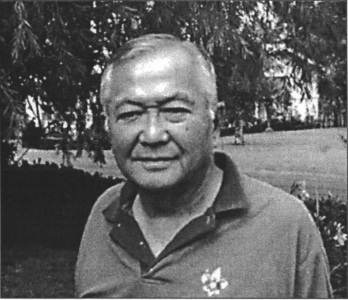Bunji Fujimoto

Tsunamis Remembered: Oral Histories of Survivors and Observers in Hawai‘i
Life history interviews with individuals who witnessed and survived tsunamis-particularly the 1946 and 1960 disasters on the Big Island of Hawai'i. Thirty individuals-mostly residents of Hilo and Laupahoehoe-recall their experiences before; during, and after the 1946 and 1960 tsunamis which were arguably the most destructive natural disasters in modem Hawaiian history.
Bunji Fujimoto, the sixth of ten children, was born March 22, 1930 in N"mole, Hawai'i. His parents, Saiji Fujimoto and Ei Sorakubo Fujimoto, were immigrants from Hiroshima, Japan. Saiji Fujimoto was a laborer and independent sugarcane grower for Wailea Milling Company which later (1944) merged with Hakalau Plantation Company. As a youth, Fujimoto helped his father in the sugarcane fields. His chores at home included cutting grass for livestock, feeding livestock and poultry, and tending the family garden. Living in an isolated area, one of his favorite recreational activities was riding the cane flumes. Fujimoto attended John M. Ross School until grade seven. Beginning with the eighth grade, he attended Laupahoehoe School, graduating in 1947. He worked for the plantation during school vacations. In 1949, he began working as a field worker for Hakalau Plantation Company. In 1951, he began his forty-one-year career in the crop log laboratory of C. Brewer Company. When he retired in 1992, the company was known as Brewer Environmental Industries. Fujimoto was interviewed in his Hilo home where he has lived since 1972. He and his wife, Matsue Uratani Fujimoto, raised two children. On the morning of April 1, 1946, Fujimoto and his two brothers boarded the bus which took them to Laupahoehoe Point where the school was located. Mter noticing the ocean receding, the students were let off the bus near the school grounds. Bunji stood in relative safety in the school playground. Toshiaki, his younger brother, who like many other students ran up to the water's edge in curiosity, was swept into the ocean and perished. Fujimoto, who has collected photographs relating to the tsunami and Laupahoehoe's history, volunteers his time at the Pacific Tsunami Museum.
Scope and Content Note
The son of an independent sugarcane grower remembers family life, cane cutting work, and schooling. A Laupahoehoe School student, he describes the receding ocean and the tidal wave that claimed the lives of fellow students, including his younger brother, and teachers on April 1, 1946.
Program Note:
This interview is part of the Center for Oral History's project Tsunamis Remembered: Oral Histories of Survivors and Observers in Hawai‘i. Interviews from this project are available in the Center's ScholarSpace open access repository.
The Center for Oral History (COH), in the Department of Ethnic Studies at the University of Hawaiʻi at Mānoa, collects, documents, preserves and highlights the recollections of Native Hawaiians and the multi-ethnic people of Hawaiʻi. It produces oral histories and interpretive historical materials about lifeways, key historic events, social movements and Hawaiʻi’s role in the globalizing world, for the widest possible use.
Please Note: The oral histories in this collection are protected by copyright and have been created for educational, research and personal use as described by the Fair Use Doctrine in the U.S. Copyright law. Please reach out Voices@noaa.gov to let us know how these interviews are being used in your research, project, exhibit, etc. The Voices staff can help provide other useful resources related to your inquiry.
The NOAA mission is to understand and predict changes in climate, weather, oceans, and coasts, to share that knowledge and information with others, and to conserve and manage coastal and marine ecosystems and resources. The Voices Oral History Archives offers public access to a wide range of accounts, including historical materials that are products of their particular times, and may contain offensive language or negative stereotypes.
Voices Oral History Archives does not verify the accuracy of materials submitted to us. The opinions expressed in the interviews are those of the interviewee only. The interviews here have been made available to the public only after the interviewer has confirmed that they have obtained consent.
